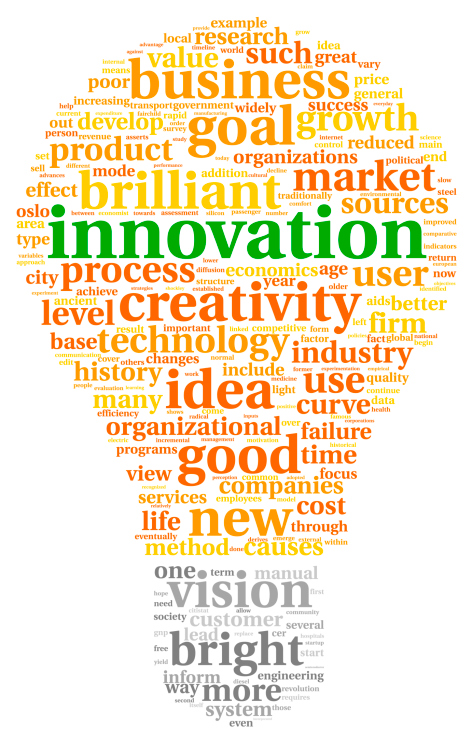Recently the NY Times online published an interesting article titled ‘Seeing Customers as Partners in Innovation‘; a report on how some companies like 3M and the Hershey Company are working much more closely with their customers in the research and design process. The theory is by combining better and deeper understanding of customer needs, their processes, how they actually use  existing products with exposure to the latest research and technology underway inside the organization that more and faster innovative ideas and improvements will be generated.
existing products with exposure to the latest research and technology underway inside the organization that more and faster innovative ideas and improvements will be generated.
Partnering with customers to drive improvements in the pace and quality of innovation seems to be a sound strategy and according to the NYT piece, both 3M and Hershey have seen some real benefits in their approach.
But after reading the piece, I started to think about the idea of Employees as partners in innovation.
Many organizations like to include ideas or concepts of ‘creativity’ or ‘innovation’ in their core values or mission statements, but when pressed with employee suggestions to try something new, or to modify an existing program or work process, managers often recoil. Doing things ‘the way they are always done’ is generally easier, more comfortable, and sometimes necessary, particularly when many organizations are operating with much leaner staffs than in the past.
Some ways that companies can harness the ideas of the workforce to help promote innovation
Ask for ideas
The simplest way to encourage ideas and creativity from employees is simply to start asking them. Set up a simple discussion forum on your company intranet or leverage one of many easy wiki platforms to ask questions and collect comments and ideas. If you want to get a bit more sophisticated, deploy an ‘idea store’ using software specifically designed for idea generation. Ideascale, Kindling, and several other low-cost solutions are available for this purpose.
Encourage investigation
Innovations are rarely isolated ‘eureka’ moments. More likely they are a product of a long term and concerted effort to try new approaches, explore ideas, and get feedback from across many people and parts of the organization. This will involve commitment from senior leaders, management, and a willingness to fail sometimes. When employees realize that they have the freedom to explore and experiment, without constantly thinking ‘What if this doesn’t work?’, the more lasting and ultimately successful you will be.
Tell IT to back-off
Many innovations to product or process result from the application of new technologies, either to existing processes and products, or to solve previously intractable problems. But in many organizations access to new tools and technologies is controlled by central IT and individual employee workstations are commonly ‘locked down’ to prevent unauthorized, and potentially harmful programs and viruses from being introduced to the company’s network. But if you truly want to get more employees involved in innovation you will likely have to get IT to relax some of these restrictions. The increased level of risk may just be the price you must pay to allow an employee to download a piece of software that just might lead to a breakthrough idea.
Hire the right people
More innovative companies can only be created by having more innovative employees. If your company is in an innovation rut, perhaps expanding or altering the ‘traditional’ sources for talent is in order. Bringing in new blood can be a way of invigorating innovation efforts, and if that is not possible then perhaps some realignment of existing resources can be effective. Asking people for their ideas may also reveal what they are passionate about, and enable you to leverage the existing employee population.
Reward
Contests, ‘best idea of the month’ prizes, or even small cash incentives are sometimes used to help get employees inspired to participate and share more freely their ideas and concepts. If you really want some tips on how to structure an incentive and rewards program to encourage more innovative behavior, check out Paul Hebert is up to at Incentive Intelligence.
Partnering with customers, vendors, and other ‘external’ stakeholders to spur and drive innovation is more common than ever and as seen for 3M and Hershey can lead to impressive results. Perhaps ‘partnering’ with your employees can also yield the same kind of benefits.
About the author:
I have been focused on the implementation of technology solutions to solve business problems for almost 15 years, working with  organizations ranging from telecommunications to consulting to higher education.
organizations ranging from telecommunications to consulting to higher education.
In the past two years I have developed and served as the instructor for a Graduate course in HR Technology for Rochester Institute of Technology in Rochester, New York. The course focuses on the common applications of technology to solve HR and business issues. We also have fun exploring the latest trends in Hr Technology like Performance and Talent Management, Second Life meetings, Twitter and wikis.
I started this blog mainly to try and get the students another avenue for information and resources beyond the traditional curriculum, from the perspective of someone they knew and (hopefully) trusted.
So, if any current or former students find your way here, please leave a comment and say hello.
Steve Boese
Follow me on Twitter
Send me an E-mail – [email protected]
By Noel Cocca
CEO/Founder RecruitingDaily and avid skier, coach and avid father of two trying to keep up with my altruistic wife. Producing at the sweet spot talent acquisition to create great content for the living breathing human beings in recruiting and hiring. I try to ease the biggest to smallest problems from start-ups to enterprise. Founder of RecruitingDaily and our merry band of rabble-rousers.
Recruit Smarter
Weekly news and industry insights delivered straight to your inbox.





